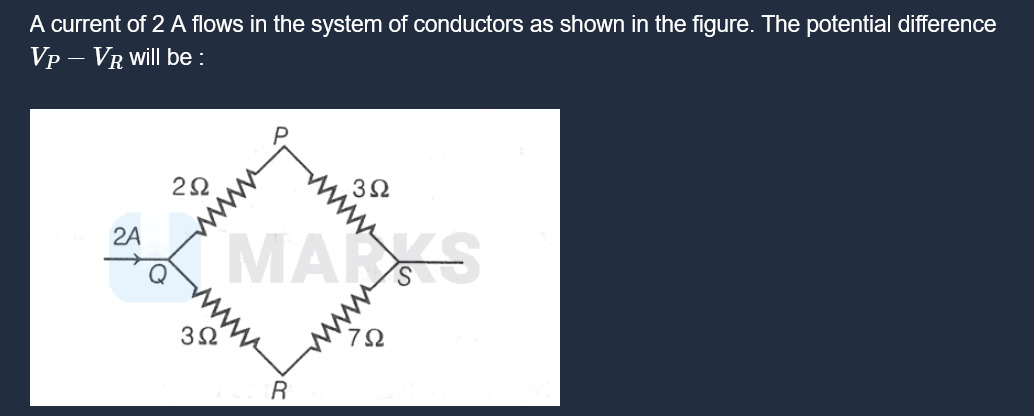Question
Question: A current of 2 A flows in the system of conductors as shown in the figure. The potential difference ...
A current of 2 A flows in the system of conductors as shown in the figure. The potential difference VP−VR will be :

A
4 V
B
1 V
C
2 V
D
3 V
Answer
4 V
Explanation
Solution
Here's how to solve this problem:
-
Circuit Analysis & Equivalent Resistances
-
The circuit has two paths from Q to R:
- Path 1 (via P and S): Resistors in series: RPQ=2Ω, RPS=3Ω, and RRS=7Ω. Total resistance = 2+3+7=12Ω.
- Path 2 (Direct): A single resistor RQR=3Ω.
-
-
Determine Total Voltage
-
The two branches are in parallel. Their combined (equivalent) resistance is
Req=(121+31)−1=(121+124)−1=(125)−1=512=2.4Ω. -
With a total current I=2A, the voltage between Q and R is
VQ−VR=I×Req=2×2.4=4.8V.
-
-
Current Division in the Branches
-
The current through the direct branch (QR) is given by current division:
IQR=2×1/3+1/121/3=2×5/121/3=2×(31×512)=2×54=1.6A. -
Thus, the current through the series branch (via P-S) is
Ibranch=2−1.6=0.4A.
-
-
Finding VP
-
In the series branch, the drop from Q to P (across the 2Ω resistor) is:
VPQ=Ibranch×2=0.4×2=0.8V. -
With VQ=4.8V (since VQ−VR=4.8V and taking VR=0V), we get:
VP=VQ−VPQ=4.8−0.8=4.0V.
-
-
Final Answer
- VP−VR=4.0V.
